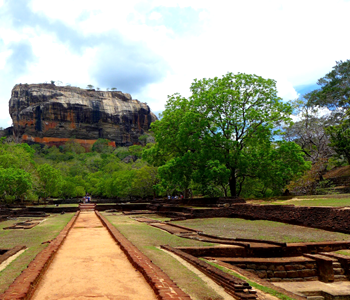
Sigiriya, also known as Lion Rock, is an iconic ancient rock fortress located in the Matale District of Sri Lanka’s Central Province. Declared a UNESCO World Heritage Site in 1982, Sigiriya is celebrated for its unique combination of architectural brilliance, historical significance, and stunning natural beauty.
Sigiriya is not just a testament to ancient ingenuity but also a symbol of Sri Lanka’s cultural pride and natural beauty. It offers a deep dive into Sri Lanka’s rich history and ancient engineering. The panoramic vistas from the summit are unparalleled. The frescoes and ancient inscriptions highlight Sri Lanka’s artistic legacy. The tranquil gardens and serene environment evoke a sense of wonder and reflection.
It is one of Sri Lanka’s most famous landmarks and a must-visit destination.
Historical and Cultural Significance
- Built during the reign of King Kashyapa I (477–495 CE), Sigiriya served as a royal palace and fortress.
- After Kashyapa’s death, it was transformed into a Buddhist monastery, which remained active until the 14th century.
- The site reflects advanced engineering and artistic prowess, showcasing Sri Lanka’s ancient civilization.
The Lion Gate
- The fortress gets its name from the giant stone lion that once guarded its entrance. Today, only the lion’s massive paws remain, symbolizing the grandeur of its design.
Frescoes
- Sigiriya is renowned for its exquisite frescoes of celestial maidens, painted on the western rock face. These vibrant depictions of apsaras (heavenly beings) are considered masterpieces of ancient Sri Lankan art.
The Mirror Wall
- A polished wall originally coated with a reflective glaze, the Mirror Wall bears ancient graffiti written by visitors over the centuries, expressing admiration for the site and its frescoes.
Gardens of Sigiriya
- The Water Gardens, Boulder Gardens, and Terrace Gardens surrounding the rock fortress are considered one of the oldest landscaped gardens in the world.
- These gardens demonstrate sophisticated irrigation and water management techniques, with fountains that still function during the rainy season.
The Summit
- At the top of the 200-meter-high rock is the remains of King Kashyapa’s palace, complete with a throne and a magnificent view of the surrounding plains, forests, and mountains.
- The summit also includes cisterns carved into the rock to store water.

